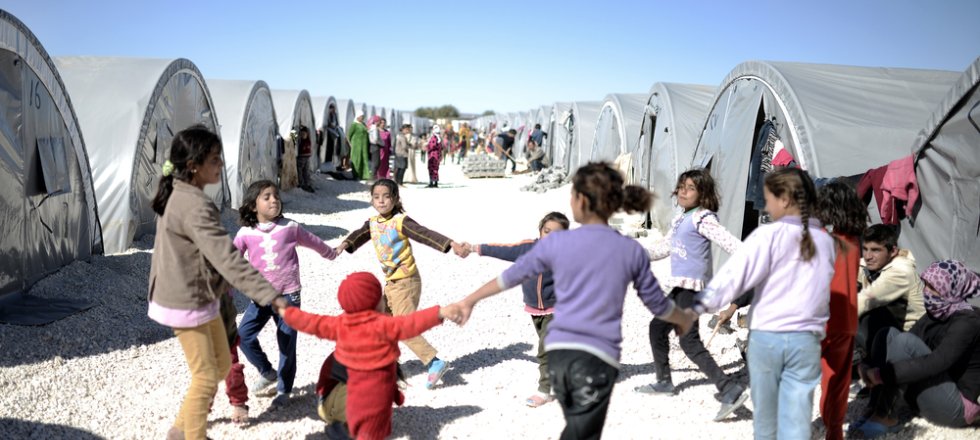Migration and settlements
Over the past decade, global displacement due to both natural and man-made causes has reached record levels. The number of international migrants worldwide has continued to grow rapidly in recent years, reaching 258 million in 2017, up from 173 million in 2000. Different types of settlements appear worldwide, such as migrant cities, slums, refugee camps and regions with large amounts of displaced people. Existing economic, political and technical systems in emergency assistance and disaster relief need to cope with this development. The complex challenges related to migration will benefit from an integrated, holistic approach involving our knowledge on green, circular and food secure settlements.
Innovation to improve the fate of refugees and their hosts
Many refugee camps and migrant cities or slums may be seen as transient settlements, often with populations equal to regular cities. Yet, living conditions can be very poor. An integrated approach with nature-based solutions and environmental measures - not only protective, but enabling - will add long-term value and improve the quality of life for refugees and their host communities. We use environmental, sustainable design principles and techniques that are based on shared understanding, co-creation and co-ownership.
- Green and blue design for improved quality of life of refugees and surrounding communities
- Food security in and surrounding refugee camps: adequate, proper and safe food for everyone
- Circular solutions for refugee camps (i.e. energy, water, waste)
- Building joint actions and coalitions with NGOs, public authorities, communities and businesses.
Migration has an enormous influence on how we deal with our environment and natural resources, and raises both socio-economic and geospatial questions for society.
Predicting migration flows and providing solutions
Potentially ground-breaking is migration forecasting: to predict future migration flows and trends. This complicated exercise can be based on all types of data. Besides data about conflicts, economy and livelihoods, data on climate, water availability and agricultural conditions can be made part of the models. Prediction of migration flows and routes will help us to deal with migration in a more informed way. We develop innovative solutions to give an answer to mass migration and create secure livelihoods for all affected people.
- Knowledge and tools based on earth observation, climate models and spatial big data to forecast crop yields
- Knowledge and data on climate change patterns to identify critical climate hotspots
- Training and facilitation on sustainable land use solutions for rural areas, e.g. to prevent soil degradation
- Training and facilitation on nature-based solutions for climate adaptation in urban areas
- Participatory livelihood approach to help create job opportunities in agriculture for young people in developing countries.
